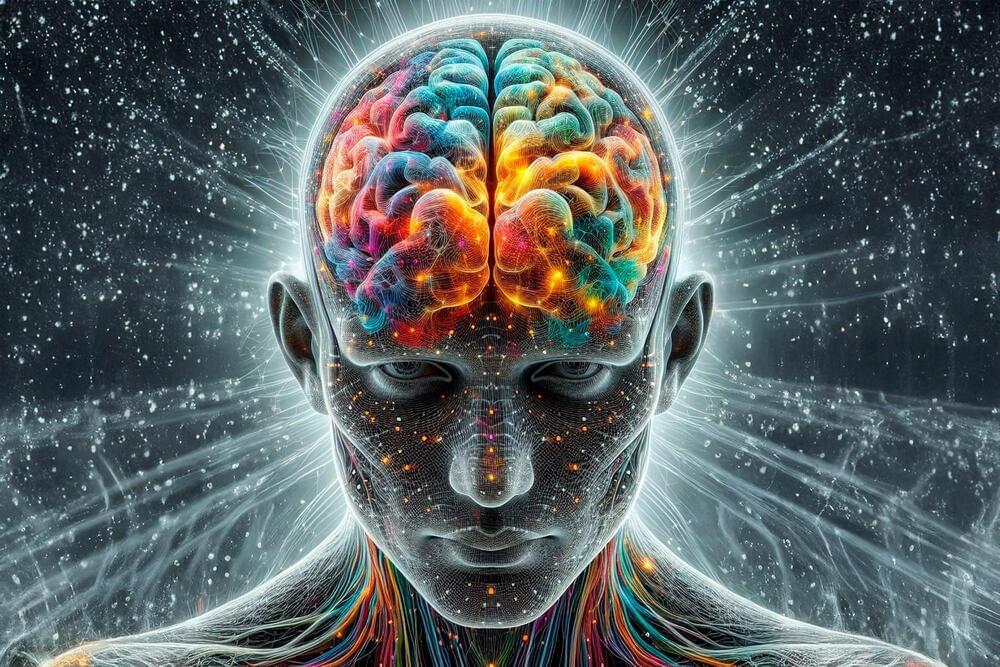OpenAI o3 scores 75.7% on ARC-AGI public leaderboard.


This timelapse of future technology, the 3rd year of the video series, goes on a journey exploring the human mind becoming digital. Brain chips turn memories and thoughts into data; could this data be sent out into space to live in the cosmos encoded into the magnetic fields between stars.
Other topics covered in this sci-fi documentary video include: bio-printing, asteroid habitats, terraforming Mars, the future of Teslabots, lucid dreaming, and the future of artificial intelligence and brain to computer interfaces (BCI — brain chips).
PATREON
The first and second volumes of ‘The Encyclopedia of the Future’ are now available on my Patreon.
Visit my Patreon here: / venturecity.
Created by: Jacob B
Narration by: Alexander Masters.
Addition footage: NASA’s Goddard Space Flight Center/CI Lab.
Thank you to today’s sponsors:
Eight Sleep: Head to https://impacttheory.co/eightsleepAugust24 and use code IMPACT to get $350 off your Pod 4 Ultra.
Netsuite: Head to https://impacttheory.co/netsuiteAugust24 for Netsuite’s one-of-a-kind flexible financing program for a few more weeks!
Aura: Secure your digital life with proactive protection for your assets, identity, family, and tech – Go to https://aura.com/impacttheory to start your free two-week trial.
Welcome to Impact Theory, I’m Tom Bilyeu and in today’s episode, Nick Bostrom and I dive into the moral and societal implications of AI as it becomes increasingly advanced.
Nick Bostrom is a leading philosopher, author, and expert on AI here to discuss the future of AI, its challenges, and its profound impact on society, meaning, and our pursuit of happiness.
We touch on treating AI with moral consideration, the potential centralization of power, automation of critical sectors like police and military, and the creation of hyper-stimuli that could impact society profoundly.
We also discuss Nick’s book, Deep Utopia, and what the ideal human life will look like in a future dominated by advanced technology, AI, and biotechnology.
Our conversation navigates through pressing questions about AI aligning with human values, the catastrophic consequences of powerful AI systems, and the need for deeper philosophical and ethical considerations as AI continues to evolve.


Summary: A study reveals how brain cell interactions influence aging, showing that rare cell types either accelerate or slow brain aging. Neural stem cells provide a rejuvenating effect on neighboring cells, while T cells drive aging through inflammation. Researchers used advanced AI tools and a spatial single-cell atlas to map cellular interactions across the lifespan in mice.
This work sheds light on how interventions, such as enhancing neural stem cells, might combat neurodegeneration. By understanding these cellular dynamics, scientists can explore tailored therapies to slow aging and promote brain resilience. The findings also offer insights into conditions like Alzheimer’s disease, highlighting the importance of cell-to-cell interactions.
A Chinese robotics firm has started mass-producing humanoid robots for general use, while its US counterparts, like Tesla, are aiming for such a feat in 2026.
Agibot, or Zhiyuan Robotics, showcased footage of its manufacturing facility on its official website and revealed that it’s on course to produce 1,000 units by the end of the year, according to a Chinese online news outlet.
Founded in February 2023 by Peng Zhihui, a former participant in Huawei’s “Genius Youth” program, the Shanghai-based startup launched its first humanoid robot model, the Raise A1, in August 2023.

OpenAI CEO says AGI is losing its meaning as the company edges closer to achieving the benchmark.

Scientists used AI to estimate the brain age of 739 healthy seniors and found that lifestyle and health conditions impact brain aging.
Researchers at Karolinska Institutet have used an AI tool to estimate the biological age of brains from MRI scans of 70-year-olds. Their analysis revealed that factors harmful to vascular health, such as inflammation and high blood sugar levels, are linked to older-looking brains, while a healthy lifestyle was associated with younger-looking brains. These findings were published today (December 20) in Alzheimer’s & Dementia: The Journal of the Alzheimer’s Association.
Leveraging AI to determine brain age.

Run by the team at orchestration, AI, and automation platform Tines, the Tines library contains pre-built workflows shared by real security practitioners from across the community, all of which are free to import and deploy via the Community Edition of the platform.
Their bi-annual “You Did What with Tines?!” competition highlights some of the most interesting workflows submitted by their users, many of which demonstrate practical applications of large language models (LLMs) to address complex challenges in security operations.
One recent winner is a workflow designed to automate CrowdStrike RFM reporting. Developed by Tom Power, a security analyst at The University of British Columbia, it uses orchestration, AI and automation to reduce the time spent on manual reporting.